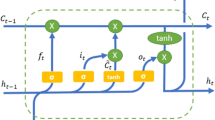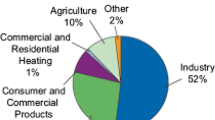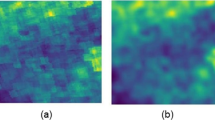Abstract
In recent years, the issue of governance of the ecological environment has been a subject of high of social concern, and the challenges in the governance of smog is even more remarkable. China has accumulated a vast real-time monitoring system, which mainly obtains pollution data through national monitoring stations, providing a strong foundation for atmospheric governance. However, there are still several challenges in obtaining data from national monitoring stations, such as high cost and difficulty in comprehensive coverage. In the internet world, big data, cloud computing and other technologies are rapidly developing. It is imperative that new countermeasures counterfeit, falsify, and establish a sound long-term supervision mechanism. It is a popular research issue in academia and a policy difficulty faced by government departments. In terms of statistical models, various deep learning methods that have made major breakthroughs in the field of computer vision are used to try to obtain standardized estimates of concentration based on picture data. In general, based on the collection and arrangement of a large amount of image data over the past three years, 7 types of deep learning models have been constructed, which can achieve fast reading and accurate estimation of PM2.5 concentrations. Based on this model, we have put forward practical policy recommendations with a view to helping the early realization of smart monitoring to reduce concentration. For the standardized PM2.5 data, the minimum estimate error can reach 0.42. On this basis, we also put forward policy recommendations with practical value, with a view to helping the early realization of smart monitoring of pollutant concentrations.



Similar content being viewed by others
References
AlZu’bi S, Hawashin B, Mujahed M, Jararweh Y, Gupta BB (2019) An efficient employment of internet of multimedia things in smart and future agriculture. Multimed Tools Appl 78(20):29581–29605
Beloconi A, Kamarianakis Y, Chrysoulakis N (2016) Estimating urban PM10 and PM2. 5 concentrations, based on synergistic MERIS/AATSR aerosol observations, land cover and morphology data. Remote Sens Environ 172:148–164
Brevini B (2020) Black boxes, not green: mythologizing artificial intelligence and omitting the environment. Big Data Soc 7(2). https://doi.org/10.1177/2053951720935141
Chen Y, Ebenstein A, Greenstone M et al (2013) Evidence on the impact of sustained exposure to air pollution on life expectancy from China’s Huai River policy[J]. Proc Natl Acad Sci110(32):12936–12941
Chow JC, Spengler JD (1986) Overview of Harvard air pollution respiratory health study program, part i: project design and ambient monitoring[J]. J Ind Pollut Control 4:30–54
Chow JC, Spengler JD (1986) Overview of Harvard air pollution respiratory health study program, part ii: chemical analysis and quality control. J Ind Pollut Control 4:18–32
Dauvergne P (2020) Is artificial intelligence greening global supply chains? Exposing the political economy of environmental costs. Rev Int Polit Econ:1–23
Dey N, Rajinikanth V, Fong SJ, Kaiser MS, Mahmud M (2020) Social group optimization-assisted Kapur’s entropy and morphological segmentation for automated detection of COVID-19 infection from computed tomography images. Cogn Comput 12(5):1011–1023
Dockery DW, Pope CA, Xu X et al (1993) An association between air pollution and mortality in six US cities[J]. N Engl J Med 329(24):1753–1759
He K, Zhang X, Ren S, Sun J (2016) Deep residual learning for image recognition. In: Proceedings of the IEEE conference on computer vision and pattern recognition, pp 770–778
Howard AG, Zhu M, Chen B, Kalenichenko D, Wang W, Weyand T, Andreetto M, Adam H (2017) Mobilenets: efficient convolutional neural networks for mobile vision applications. arXiv preprint arXiv:1704.04861
Huang G, Van Der Liu Z Maaten L, Weinberger KQ (2017) Densely connected convolutional networks. In: Proceedings of the IEEE conference on computer vision and pattern recognition, pp 4700–4708
Huh JH (2017) PLC-based design of monitoring system for ICT-integrated vertical fish farm. Human-centric Comput Inf Sci 7(1):1–19
Huh JH, Seo YS (2019) Understanding edge computing: engineering evolution with artificial intelligence. IEEE Access 7:164229–164245
Kaur P, Kumar R, Kumar M (2019) A healthcare monitoring system using random forest and internet of things (IoT). Multimed Tools Appl 78(14):19905–19916
Krizhevsky A, Sutskever I, Hinton GE (2012) Imagenet classification with deep convolutional neural networks. In: Advances in neural information processing systems, pp 1097–1105
LeCun Y, Bottou L, Bengio Y, Haffner P (1998) Gradient-based learning applied to document recognition. Proc IEEE 86(11):2278–2324
Liang X, Li S, Zhang S, Huang H, Chen SX (2016) Pm2. 5 data reliability, consistency, and air quality assessment in five chi- nese cities. J Geophys Research: Atmos 121(17):10220–10236
Lin C, Li Y, Yuan Z, Lau AK, Li C, Fung JC (2015) Using satellite remote sensing data to estimate the high-resolution distribution of ground-level PM2.5. Remote Sens Environ 156:117–128
Mao J, Phommasak U, Watanabe S, Shioya H (2014) Detecting foggy images and estimating the haze degree factor. J Comput Sci Syst Biol 7:1
Peters A (2005) Particulate matter and heart disease: evidence from epidemiological studies[J]. Toxicol Appl Pharmcol 207(2):477–482
Ross MA (2009) Integrated science assessment for particulate matter. US Environmental Protection Agency, Washington, DC, pp 61–161
Simonyan K, Zisserman A (2014) Very deep convolutional networks for large-scale image recognition. arXiv preprint arXiv:1409.1556
Singh AV, Ansari MHD, Rosenkranz D, Maharjan RS, Kriegel FL, Gandhi K, Kanase A, Singh R, Laux P, Luch A (2020) Artificial intelligence and machine learning in computational nanotoxicology: unlocking and empowering nanomedicine. Adv Healthc Mater 9(17):1901862
Szegedy C, Vanhoucke V, Ioffe S, Shlens J, Wojna Z (2016) Rethinking the inception architecture for computer vision. In: Proceedings of the IEEE conference on computer vision and pattern recognition, pp 2818–2826
Tran DT, Huh JH (2022) Building a model to exploit association rules and analyze purchasing behavior based on rough set theory. J Supercomputing 78(8):11051–11091
Wang H, Yuan X, Wang X, Zhang Y, Dai Q (2014) Real-time air quality estimation based on color image processing. In: 2014 IEEE Visual Communications and Image Processing Conference. IEEE, pp 326–329
Xu K, Wang J, Pan R, Wang H (2019) Photographic diary: a new estimation approach to PM 2.5 monitoring. Stat Interface 12(3):387–395
Zhang Z, Ma H, Fu H, Wang X (2015) Outdoor air quality inference from single image. In: MultiMedia Modeling: 21st International Conference, MMM 2015, Sydney, NSW, Australia, January 5-7, 2015, Proceedings, Part II 21. Springer International Publishing, pp 13–25
Žigienė G, Rybakovas E, Alzbutas R (2019) Artificial intelligence based commercial risk management framework for smes. Sustainability 11(16):4501
Acknowledgements
This research is supported by National Natural Science Foundation of China (Grant No. 12001102), and “the Fundamental Research Funds for the Central Universities” in University of International Business and Economics (No. 19QD22, and No. CXTD13-04).
Author information
Authors and Affiliations
Corresponding author
Ethics declarations
The datasets generated and/or analysed during the current study are not available due to privacy issues as it comes from a personal weibo.
Conflict of interest/competing interests
The author declares no conflicts of interest/competing interests.
Additional information
Publisher’s note
Springer Nature remains neutral with regard to jurisdictional claims in published maps and institutional affiliations.
Rights and permissions
Springer Nature or its licensor (e.g. a society or other partner) holds exclusive rights to this article under a publishing agreement with the author(s) or other rightsholder(s); author self-archiving of the accepted manuscript version of this article is solely governed by the terms of such publishing agreement and applicable law.
About this article
Cite this article
Xu, K. Artificial intelligence unlocks ecological environment governance —smart statistical monitoring based on meteorology. Multimed Tools Appl 82, 21613–21625 (2023). https://doi.org/10.1007/s11042-023-14685-7
Received:
Revised:
Accepted:
Published:
Issue Date:
DOI: https://doi.org/10.1007/s11042-023-14685-7




